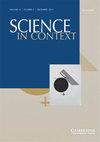Co-creating a Brass Band Dance Number for a Large-scale Community Opera Project with the Aid of Improvisatory Techniques: Co-creativity within an Operatic Context
IF 0.5
4区 哲学
Q2 Arts and Humanities
引用次数: 0
Abstract
Community opera projects have often integrated bands of varying types to involve participants in ways other than singing and acting. Although many community opera projects incorporate co-creative elements and improvisation techniques in their composition, there is little coverage of how bands, in practice, can be involved as participants in the co-creative process of shaping a new community opera. This paper documents a practice research project that took place with Waterbeach Brass Band based in Cambridgeshire, UK. It records in detail the process whereby aspects of a brass band dance number were devised during co-creative improvisation workshops, and provides both audio-visual recordings and notated examples that capture the emergent creative process, alongside a commentary explaining the processes and methodological approaches employed. The paper discusses the different ways in which members of the brass band responded to improvisational workshops, and how this fed into the co-creative process. It subsequently examines how such co-creative elements can form part of a larger musical-dramatic presentation, demonstrating how they can be developed during an extended operatic scene.在即兴技术的帮助下,为大型社区歌剧项目共同创作铜管乐队舞蹈:歌剧背景下的共同创造
社区歌剧项目经常整合不同类型的乐队,让参与者以唱歌和表演以外的方式参与进来。尽管许多社区歌剧项目在其创作中融入了共同创作元素和即兴创作技术,但在实践中,乐队如何作为参与者参与塑造新社区歌剧的共同创作过程的报道很少。本文记录了与英国剑桥郡的水滩铜管乐队一起进行的实践研究项目。它详细记录了在共同创作即兴创作研讨会上设计铜管乐队舞蹈数字的过程,并提供了捕捉突发创作过程的视听记录和标记示例,以及解释所采用的过程和方法方法的评论。本文讨论了铜管乐队成员应对即兴工作坊的不同方式,以及如何将其融入共同创作过程。它随后探讨了这些共同创作的元素如何形成一个更大的音乐戏剧表演的一部分,展示了它们如何在一个扩展的歌剧场景中发展。
本文章由计算机程序翻译,如有差异,请以英文原文为准。
求助全文
约1分钟内获得全文
求助全文
来源期刊

Science in Context
综合性期刊-科学史与科学哲学
CiteScore
0.80
自引率
0.00%
发文量
1
审稿时长
>12 weeks
期刊介绍:
Science in Context is an international journal edited at The Cohn Institute for the History and Philosophy of Science and Ideas, Tel Aviv University, with the support of the Van Leer Jerusalem Institute. It is devoted to the study of the sciences from the points of view of comparative epistemology and historical sociology of scientific knowledge. The journal is committed to an interdisciplinary approach to the study of science and its cultural development - it does not segregate considerations drawn from history, philosophy and sociology. Controversies within scientific knowledge and debates about methodology are presented in their contexts.
 求助内容:
求助内容: 应助结果提醒方式:
应助结果提醒方式:


